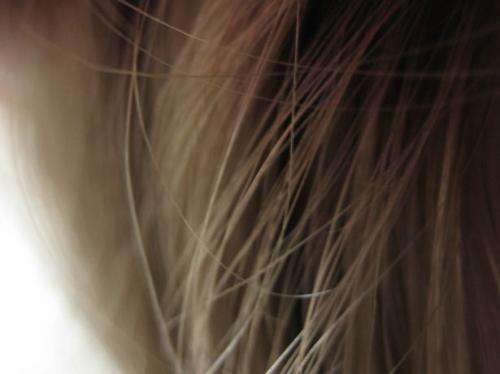Q&A: Treating hair loss

Dear Mayo Clinic: Can anything be done for hair loss that is likely hereditary? If so, what should I look for when choosing a hair regrowth product?
A: Hair loss often is caused by a combination of heredity and aging. Treatments that may slow that type of hair loss and help regrow hair, including over-the-counter therapies such as shampoos, are available. And they can be effective.
On average, people lose about 50 to 100 hairs every day. Because new hair grows in at the same time, this hair loss usually doesn't cause noticeable thinning of scalp hair. The cycle of hair growth, shedding and regrowth can be disrupted for several reasons. Family history, medical conditions and medication, and hormonal changes all can lead to hair loss. Stress also can cause hair loss.
Heredity typically affects pattern balding. This type of hair loss usually happens slowly and in predictable patterns—a receding hairline and bald spots in men, and thinning hair along the crown of the scalp in women. If your hair loss follows these patterns, it's likely hereditary. Over-the-counter remedies are a reasonable first step to combat this type of hair loss.
The most common hair loss treatment you can buy over the counter is a medication called minoxidil. It comes in liquid, foam and shampoo forms. To be most effective, apply the medication to the scalp twice daily. Products with minoxidil help many people maintain the hair they still have, and it can regrow up to about 10% of lost hair.
The extra-strength liquid form of this medication is what's typically recommended for patients with pattern baldness. It can be used by men and women. The liquid is easier to apply directly to the scalp than the foam, which often is absorbed by the hair. The shampoo isn't ideal because many people don't have time to shampoo their hair twice a day, and the force of shampooing can stress the hair, causing additional hair loss.
To retain the benefits of the medication, you will need to continue using it regularly. If you stop using it, the hair you've regrown may fall out, and you're likely to return to the rate at which you were losing hair before you began treatment.
Another way to help reduce hair loss is to be gentle with your hair. Decrease shampooing to two or three times a week. Use a light touch when brushing and combing, especially when your hair is wet. A wide-toothed comb may help prevent pulling out hair. Avoid tight hairstyles, such as braids, buns or ponytails. Try not to twist, pull or rub your hair. Avoid harsh treatments such as curling irons, straightening irons and hot-oil treatments.
Prescription treatments also are available for pattern balding hair loss. The medication finasteride has been shown to effectively regrow men's hair. For women, hormone therapies that help balance the levels of estrogen and testosterone often can maintain hair and decrease loss.
If over-the-counter remedies and self-care steps aren't enough to decrease your hair loss, or if you're concerned that your hair loss may be the result of a different underlying problem, such as a medication you take, talk to your health care provider or make an appointment to see a dermatologist.
©2019 Mayo Foundation for Medical Education and Research
Distributed by Tribune Content Agency, LLC.

















